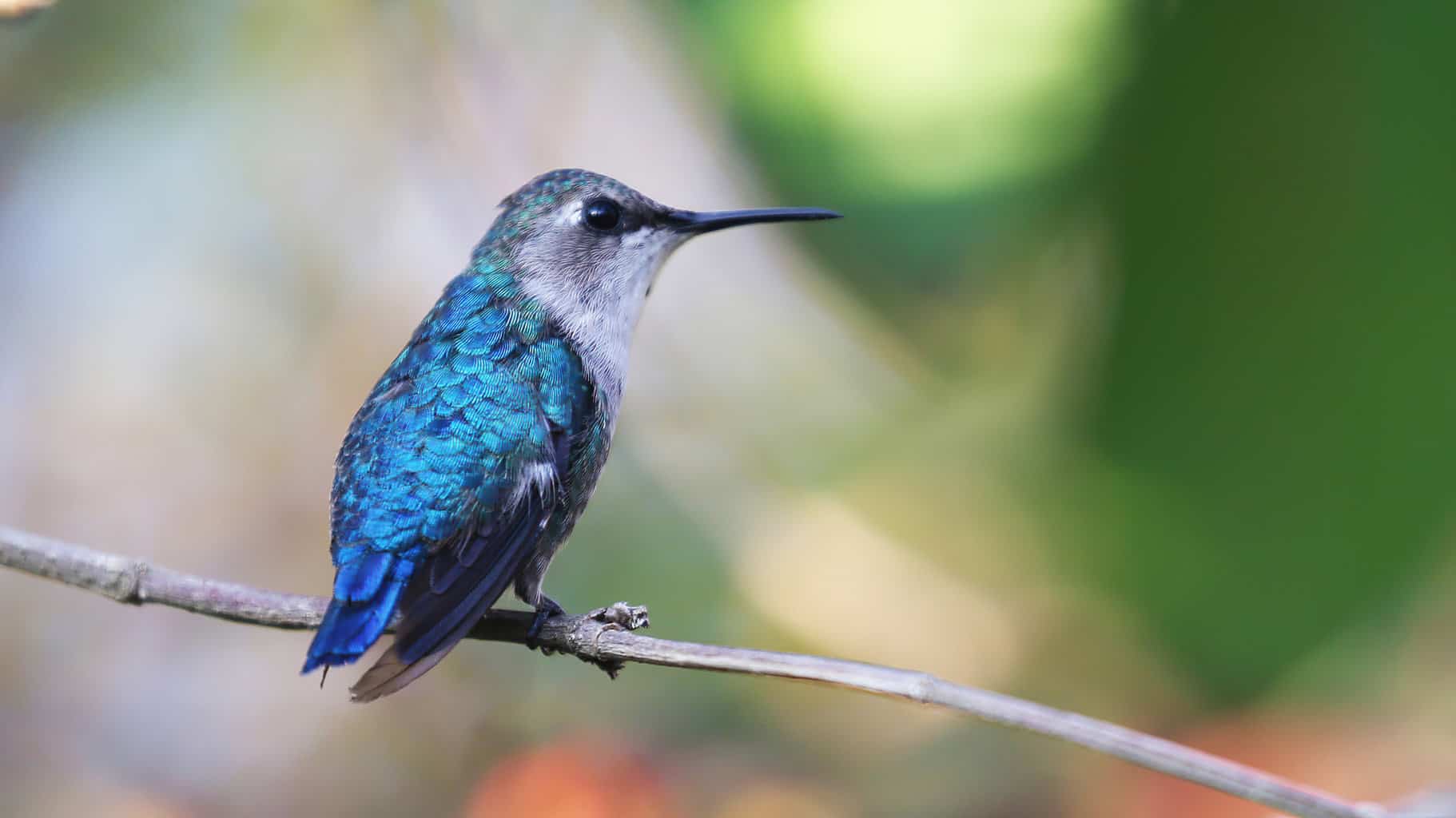Have you ever wondered which bird is the tiniest in the world? That honor belongs to the tiny and gorgeous bee hummingbird, a hummingbird species endemic to Cuba. Read on to learn all about this fascinating bird!
Appearance
The male bee hummingbird is a beautiful sight to behold, with a shining, pinkish-red head and throat. The top of his body is blue, and the underside is grayish-white. The male of this species is smaller than his female counterpart.
To catch the male bee hummingbird in its colorful splendor, you’ll need to get a glimpse of him during mating season. After the breeding season, these colors are shed in favor of a blue body and black tail tips. Females are also blue-green with a gray underbelly, and they sport white spots on their tail feathers.
While many species of hummingbirds appear slender, these tiny birds have a plump, rounded appearance.
Where Does It Live?
Bee Hummingbirds are found only in Cuba, where they are important pollinators, feeding on 10 different species of plants there.
How Big Is It?
This tiny aviator is the smallest bird in the world, with males growing to just 2.25 inches in length and weighing under two grams! Female bee hummingbirds are slightly larger, weighing up to 2.6 grams, but both are very tiny.

To put it in perspective, the body weight of these itty-bitty creatures is less than that of an American dime. Imagine spotting this teeny pollinator in the wild!
Behavior and Habits
The Call and Song of the Bee Hummingbird
With such a diminutive body, it follows that this bird’s call and song are equally delicate! You can listen to the sound of this bird here:
What Do They Eat?
These hummingbirds feed mostly on nectar, which they gather from flowers with their long beaks. While collecting nectar from flowers, their beaks and heads collect pollen, making them important pollinators in their habitat. They also occasionally feed on spiders and insects.
Migration
Thanks to the climate in their home, the bee hummingbird does not migrate.
Habitat
The Bee Hummingbird can be found throughout the entire Cuban archipelago, inhabiting habitats such as mountain valleys, swamps, lowland flats, and dense forests. These beautiful and tiny birds are considered a near-threatened species, with their population suffering from the impacts of climate change, deforestation, and the introduction of non-native predators by humans.
Life Span of Bee Hummingbirds
These miniature creatures enjoy a life span of up to seven years in the wild and up to ten years in captivity.
They begin their lives as eggs the size of a garden pea. The eggs are incubated by the mother for 21 days in nests that are only an inch across! The eggs spend two days hatching, and the mother bird then cares for the babies for 18 days before they are able to leave the nest and begin their independent, mostly solitary lives.
Frequently Asked Questions
How Fast Does a Bee Hummingbird Fly?
These tiny birds are speedy, flying up to 25 to 30 miles per hour! They beat their wings around 80 times per second, and during the breeding season, males can beat their wings up to 200 times per second.
What Are the Nests of Bee Hummingbirds Like?
Bee hummingbirds make nests that are just an inch in diameter, around the size of a quarter! Their nests are made from cobwebs, lichen, and tree bark, and they’re used just once.

